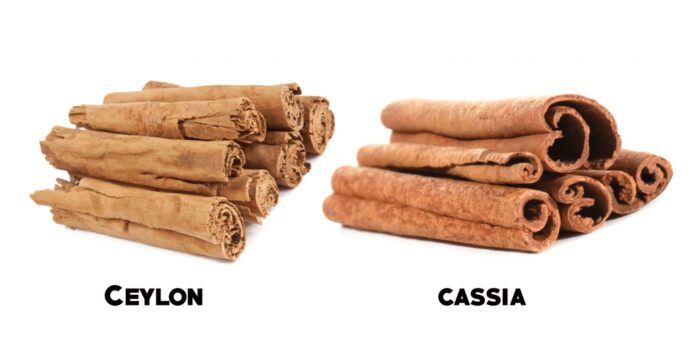
We all sometimes add a teaspoon of cinnamon to something, but we often do not know whether that is Ceylon cinnamon or cassia. And there are indeed differences between these two types of cinnamon; taste alone can add another dimension to your dish. Let’s discuss cinnamon cassia vs cinnamon bark.
Two types of cinnamon, two origins
Cinnamon is not a protected name and therefore both types may be sold with this label. Quite a few differences. Both varieties come from the cinnamon But Ceylon cinnamon (also called ‘real cinnamon’) comes from a different tree, from a different area, has a different color, structure and shape and gives your dishes a different taste than cassia. Tree, the Cinnamomum . It grows in tropical areas and is a member of the laurel family (just like the bay leaf and – yes really – the avocado tree). Sri Lanka – known as Ceylon until 1972 – owns the Cinnamomun Verum, where the Ceylon cinnamon comes from. This tree has a thin bark, which makes the rolled up pieces of inner bark more fragile. These cinnamon sticks are rolled in from one side and contain several layers. The cassia cinnamon sticks are thicker, because the Cinnamomum Cassia (grows in Indonesia, among others) has a thicker bark. These pipes are hollow, harder and rolled inwards from two sides.
Cassia, for example, has a somewhat sharper and bitter taste and Ceylon cinnamon, on the other hand, is subtle, warm and pleasant.
Cinnamon flavors and colors
In terms of taste, there is also a lot to tell. They both taste like cinnamon, of course, but there are differences. Cassia, for example, has a somewhat sharper and bitter taste and Ceylon cinnamon, on the other hand, is subtle, warm and pleasant. The color of these spices is also different; Ceylon cinnamon has a light brown color and cassia a deep red. This can also affect the color of your dish.
Adding cinnamon to your pasta sauce, meat marinade or Mediterranean vegetable stew also works wonders.
Both cassia and Ceylon cinnamon go well with sweet and savory dishes. Many people do it with their coffee, smoothie or breakfast, the Israeli-British chef Ottolenghi gives it a boost to his meringues, and we all know those deliciously scented cinnamon rolls from Scandinavia. But adding cinnamon to your pasta sauce, meat marinade or Mediterranean vegetable stew works wonders too. The sharp taste of cassia or the somewhat richer and sweet taste of Ceylon cinnamon are characteristics with which you can enrich your dish. Which cinnamon you choose depends on your personal preference.





